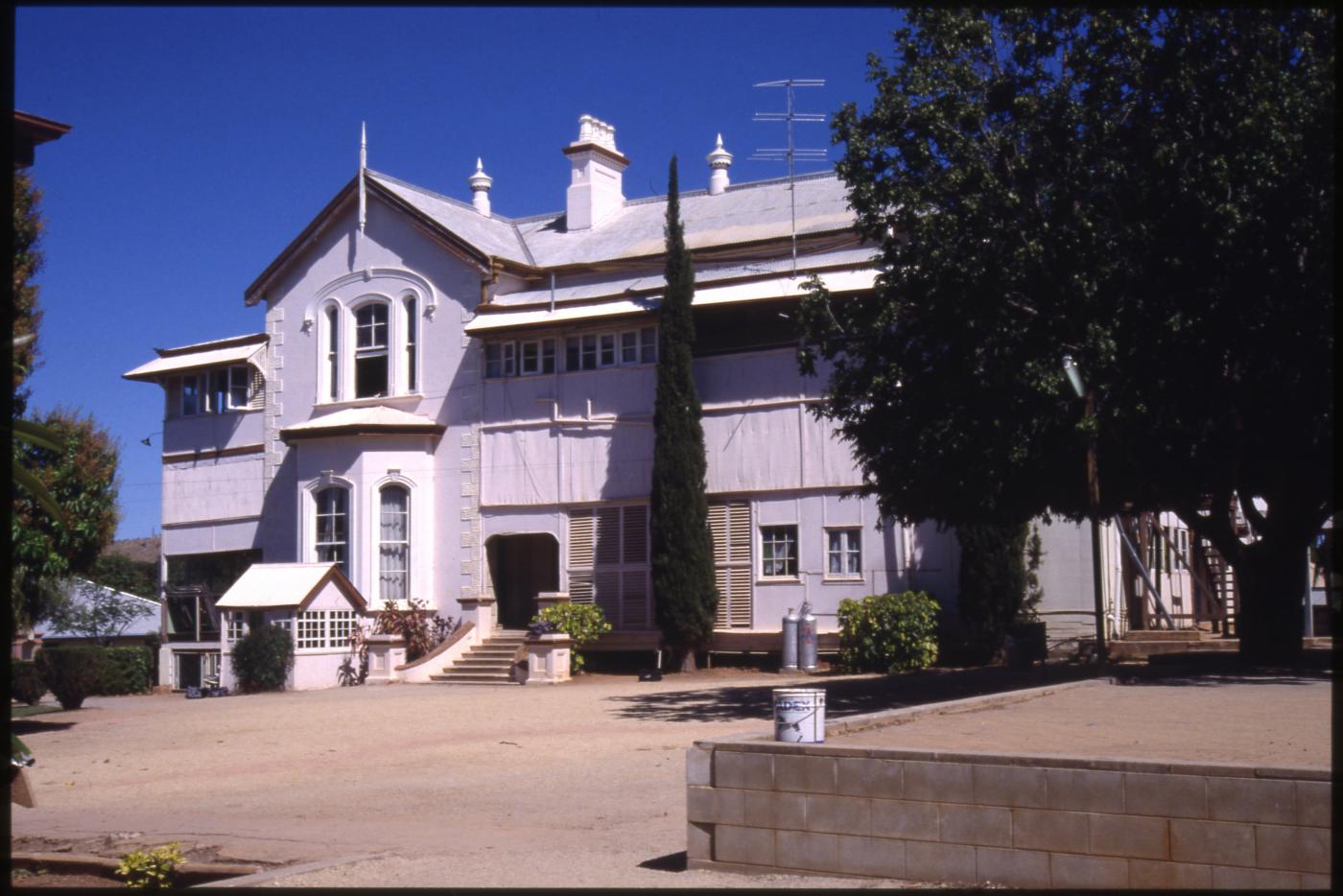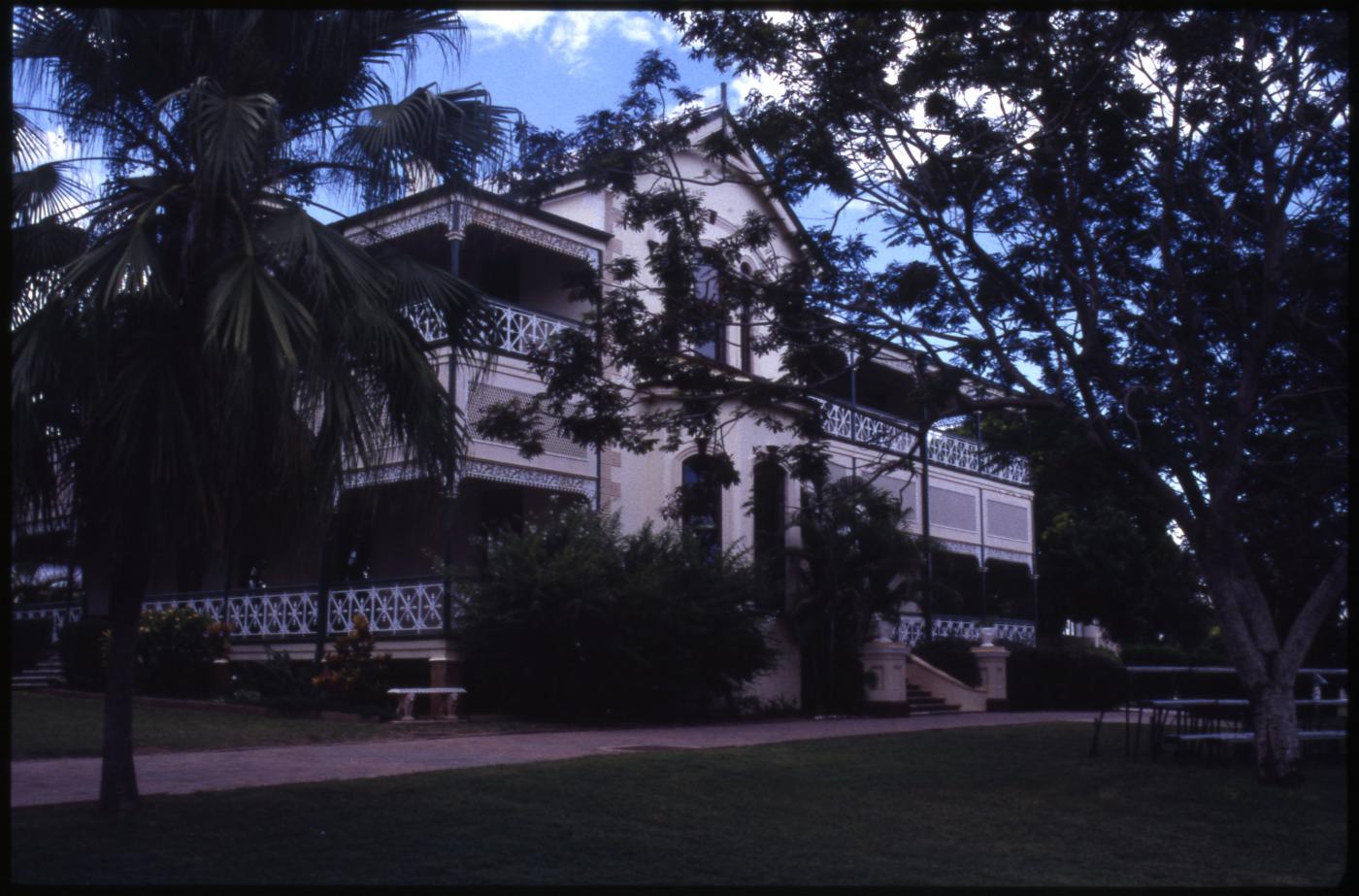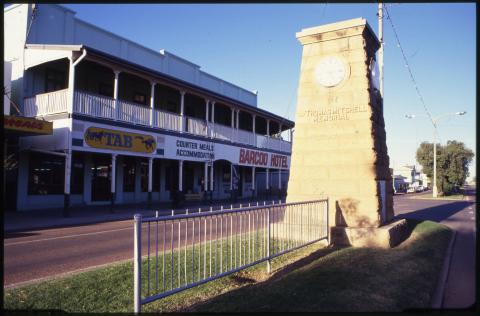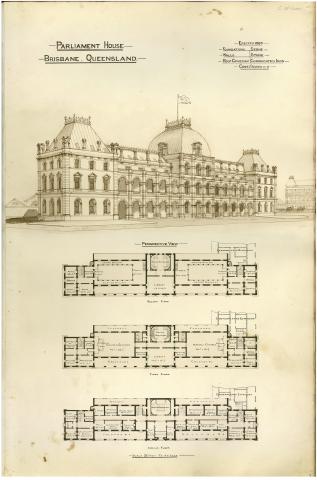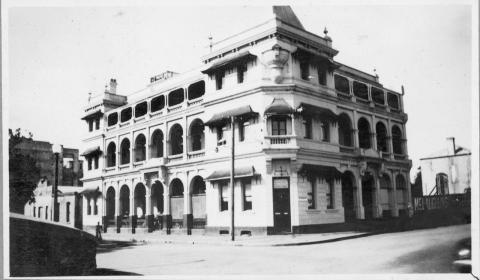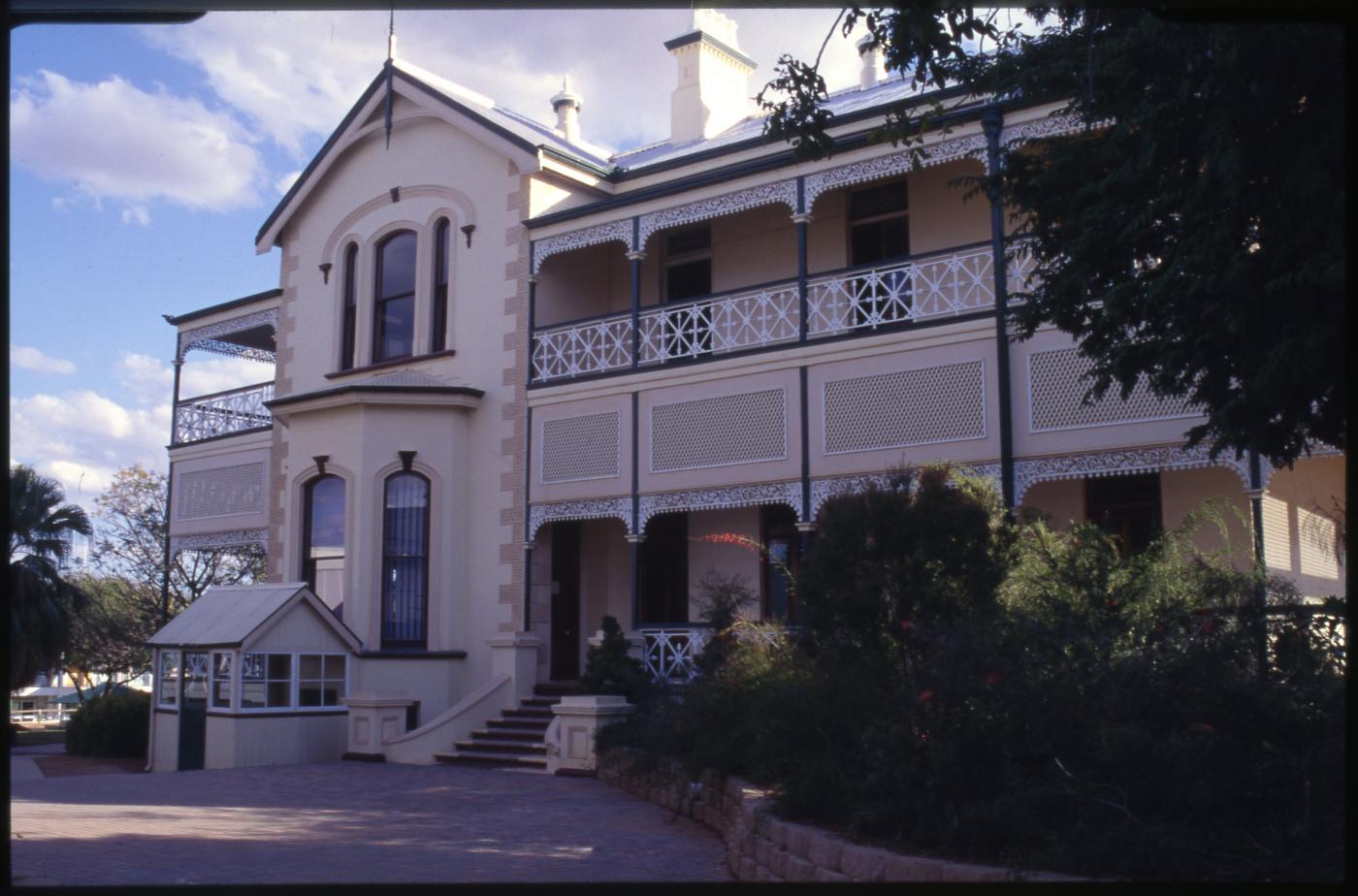
- News of the day
-
Evening Telegraph, Thursday 16 January 1919, page 4
TO STATION OWNERS, FURNITURE I VENDORS AND THE PUBLIC GENERALLY.
HIGHLY IMPORTANT : PRELIMINARY ANNOUNCEMENT.
EXTENSIVE AUCTION SALE
of
THE WHOLE OF THE UNIQUE AND EXPENSIVE FURNISHINGS
of
"THORNBURGH HOUSE,"
Charters Towers.
On Account of
HONORABLE E. H. T, PLANT, M.L.C.
Commencing
TUESDAY, 21st JANUARY, 1919, and to be continued on succeeding days.
The Catalog Includes—
HANDSOME GRAND "RONISCII" PIANO. This is a very high-class and rare Instrument.
FULL SIZED BILLIARD TABLE with all necessary Accessories,
VERY CHOICE BOOKCASE, with sliding doors and recesses.
CARVED ENGLISH OAK SIDEBOARD, with numerous Bevelled Mirrors inset.
There are numerous Articles of Hand-carved English Oak.
A Catalog Is being printed and may be acquired by making application to the Auctioneer.
Further particulars will appear in the "Evening Telegraph" at a later date.
CHARLES MANN. Auctioneer.
- Background
-
In the year before construction on Thornburgh began, Plant and his family spent 12 months visiting England; a practice not uncommon for wealthy Australians who wished to collect ideas and furnishings for a projected residence. It is not surprising that when it was finished, Thornburgh was described by the Northern Miner as the "the handsomest and most convenient dwelling house in the North". The paper also noted with approval that apart from two mantelpieces brought from England, most of the materials used in the building itself were made in north Queensland. The two storeyed home, located on Plant's Ridge, was not only large, handsome and tastefully decorated, but incorporated some innovative ideas. These included an inner roof of Willesden paper intended to allow air drawn through mesh under the roof to circulate between it and the roof proper thus cooling the building. An unlimited supply of water piped through the house was provided by means of an elevated tank supplied by steam pump from the dam of the Bonnie Dundee Mine which Plant owned and which the house overlooked. Electricity was also supplied.
The basement to the house contained, besides storage space, wine cellar and larder, a children's playroom with a concreted area for them to use as a skating rink.
To the rear was a separate servants' section which contained a kitchen, servant's hall, three bedrooms and a bathroom. Plant also employed a large grounds staff and by 1919 when the house was sold, the extensive gardens and mature trees formed an oasis of greenery in the parched environment of Charters Towers and were an important part of the town landscape.
Ownership of the School passed to the Presbyterian Assembly and Methodist Conference in 1932 during the Depression when the local College Council found it difficult to keep the school running as student numbers fell. Matters began to improve with the appointment in 1939 of a new Principal, T.R. McKenzie. To boost morale and raise the profile of the school in the community, he, his wife and the school staff carried out cleaning, repainting and minor improvements to the college during the 1939/40 Christmas break. The school building itself was not requisitioned during the War for military use, though an American anti-aircraft battery, machine gun emplacements and communications systems were installed around the margins of the school ovals.
As part of a rationalisation process, the campuses of Blackheath and Thornburgh were combined on the Thornburgh site between 1979 and 1982. A decision was made to demolish Thornburgh House, but was not implemented as it was found that the cost of new buildings would be greater than that of restoring the old. In 1985-87 classrooms in Thornburgh House were repaired and by 1987 plans were in place to restore the house. During restoration, rooms were provided for past students, for archives and for the school governors. Areas were also set aside for teaching, displays and for the presentation of the performing arts. Work on the building was completed in 1995.
Courtesy of the Queensland Heritage Register
Additional images
/146.2565499,-20.0703428,7/450x450@2x.png?access_token=pk.eyJ1IjoicXNhLWRpc2NvLXFsZCIsImEiOiJjamJmdTgyZXEyeWNjMnlxZm8xcmtieHgxIn0.lmT9J5tTPKGuuccQgCVSAg)

